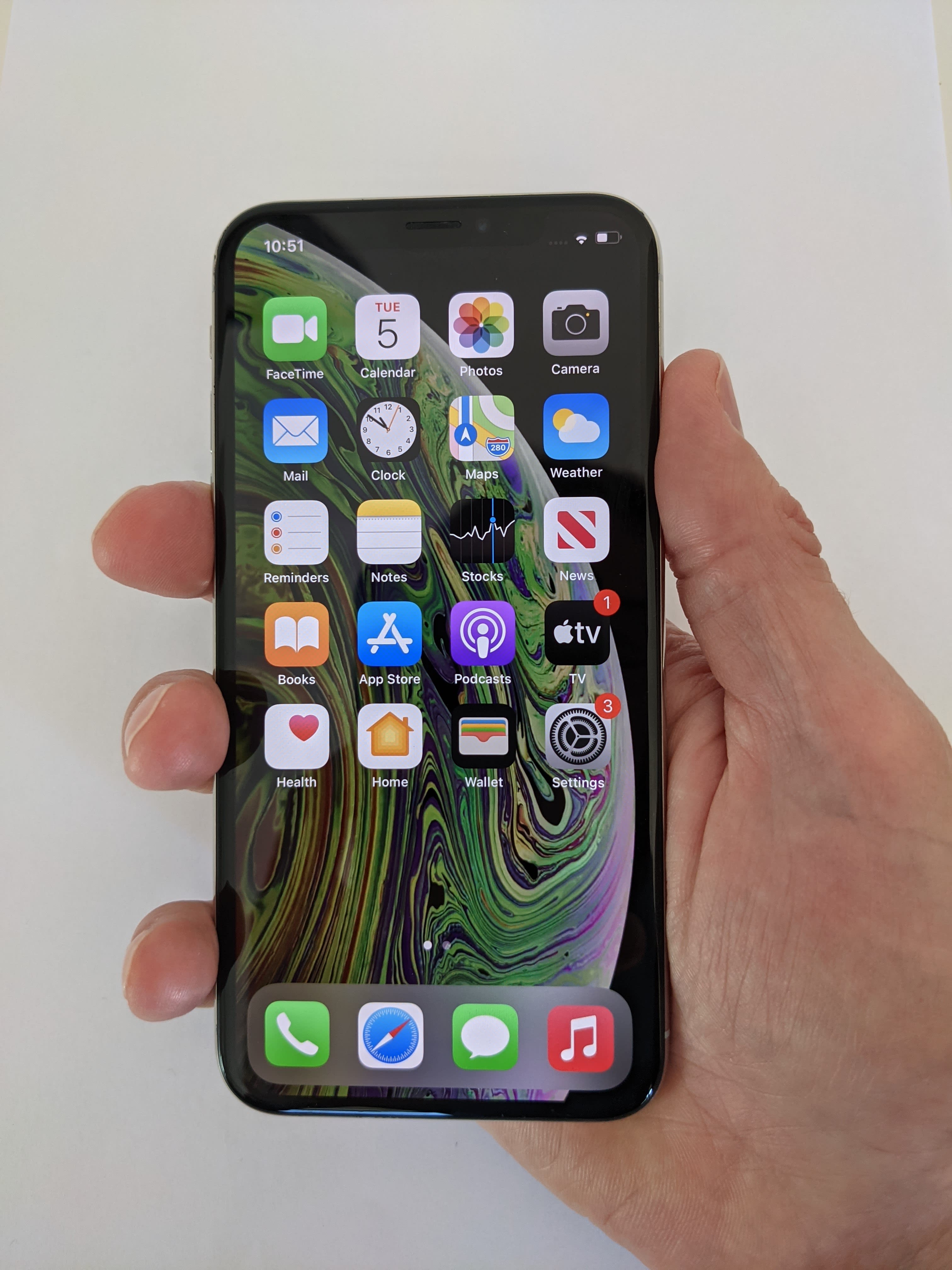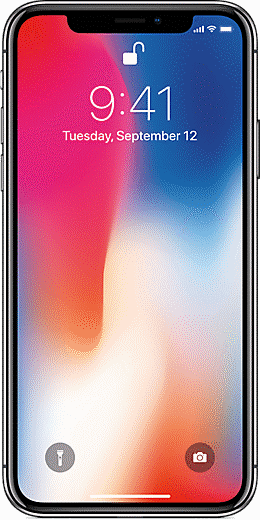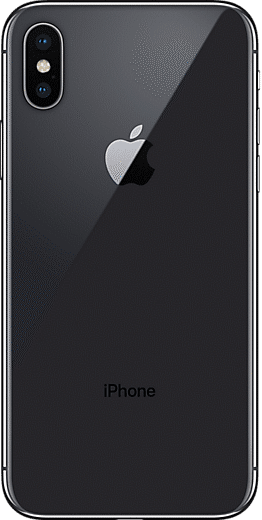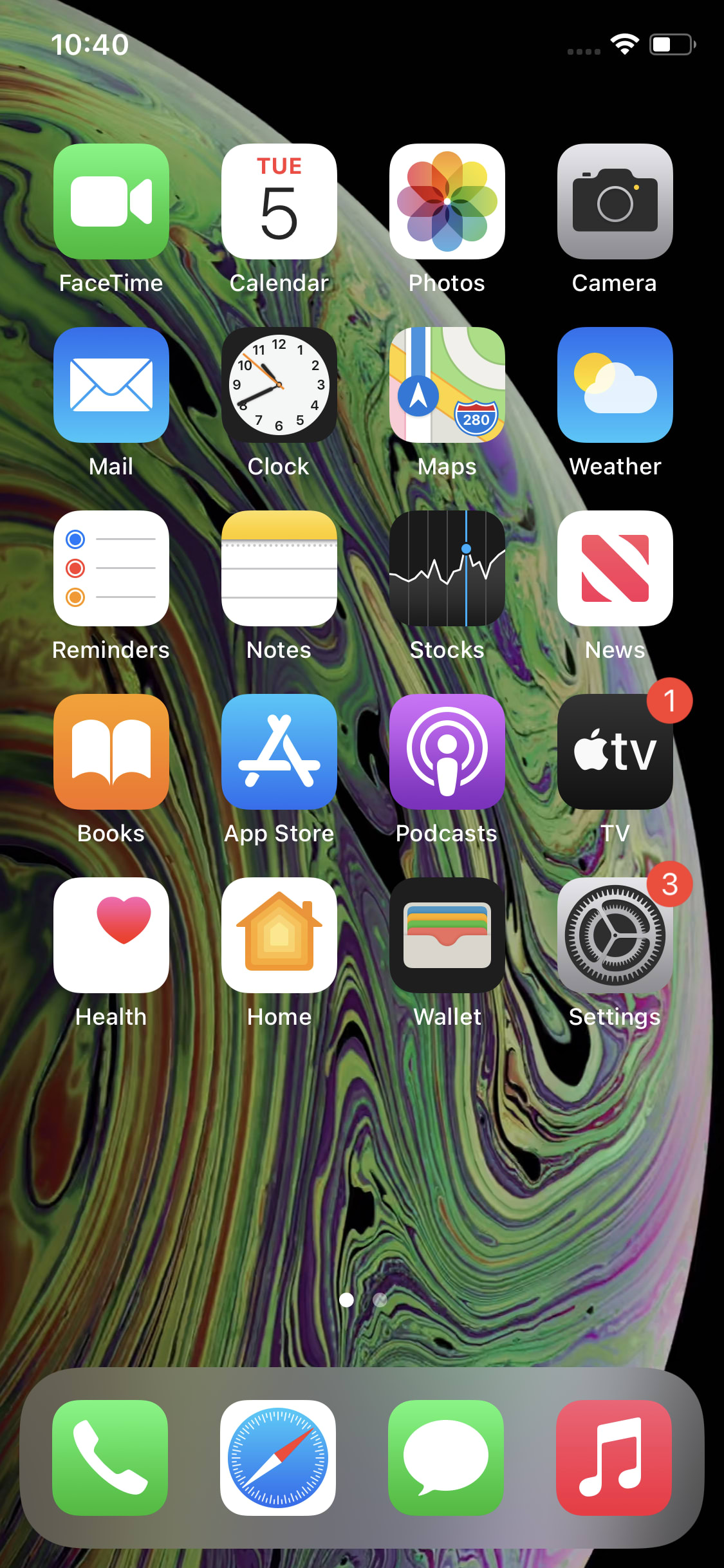
The iPhone X was one of Apple’s worst-kept secrets. For at least a year before it launched, rumours were circulating that Cupertino planned to radically update the iPhone design, reducing the screen borders and introducing a new camera-based authentication system. Reality rarely matches up to hype, but when the iPhone X finally arrived, in November 2017, it was a sensation.
The iPhone X set the direction that all new iPhones have followed since: a big screen, free of clutter and with minimal, metal borders. It still looks great today, but it’s now four generations old. Is it worth buying a refurbished iPhone X? Discover all in our iPhone X review.
Pros
- Iconic design
- Reasonable performance
- Fantastic screen
Cons
- Four generations old
- Basic camera
Quick links:
iPhone X review – overview
By 2017, iPhones were looking dated next to Android competitors that had screens which stretched almost edge-to-edge. Rumours had been flying that Apple would update its phones’ design, and then the iPhone 8 launched – looking almost exactly like the iPhone 7.
Just two months later Apple finally debuted the iPhone X – and shot itself in the foot. Despite being little bigger than the iPhone 8, the iPhone X had a bigger, hugely better screen than even the iPhone 8 Plus. It offered slightly better performance and extra features, too, immediately undermining the iPhone 8 family. There’s no doubt it’s a much better phone.

iPhone X – design
The iPhone X was a radical departure for Apple. The basic iPhone design had evolved slowly since the 2007 original, and the iPhone 8 design was essentially unchanged from the iPhone 6. While earlier phones had a small or medium sized screen, bracketed with thick borders top and bottom, the iPhone X did away with them. In the new ‘bezel-free’ design, the screen stretched almost to the four edges of the phone.
Apple also scrapped the TouchID fingerprint sensor, replacing it with an enhanced front camera that used facial recognition to unlock the phone. The iPhone X inherited the iPhone 8’s glass back, but moved the flash LED into the camera mound alongside the dual camera system.
Compared side by side, the iPhone 8 and iPhone X look like they’re from different eras. While the iPhone 8 undoubtedly represents an iconic design, it’s trounced by the iPhone X.



iPhone X – display

The iPhone X was the first iPhone with an OLED screen. Brighter, sharper and more colourful than any previous Apple phone, it’s a huge part of the appeal. The new design’s smaller borders also allowed for a big size upgrade. While the iPhone 8 had a 4.7” screen and the iPhone 8 Plus 5.5”, the iPhone X squeezed in 5.8”.
The new display also allowed a big boost in pixel density. Resolution went up to 2,436×1,125 (458 pixels per inch (ppi)), from just 1,334×750 (326ppi) on the iPhone 8. Even the iPhone 8 Plus could offer only 1,920×1,080 (401ppi).
Not surprisingly, the iPhone X’s screen is hugely more impressive to use. Whites are far purer and brighter, and blacks are more absolute than on earlier iPhones. Turn the phone at an angle and the content remains sharp and clear, too. Today, this screen alone is more than worth the extra cost over an iPhone 8 or iPhone 8 Plus.
iPhone X – camera and video performance
As if the iPhone X hadn’t already done enough to embarrass the iPhone 8, Apple threw in an upgraded camera. On the surface, the dual-lens, 12MP system looks similar to the one on the iPhone 8 Plus, but there are some subtle but important upgrades.
First up, the iPhone X has a slightly wider ƒ/2.4 aperture telephoto lens than the iPhone 8 Plus. This allows in more light, improving image and video quality in murky conditions. Next, both lenses are optically stabilised, rather than just one on the iPhone 8 Plus. This means photos are less prone to blur, and videos less shaky, whether you’re using the wide or telephoto lens.
There’s also an upgrade to the 7MP front-facing camera. Although it’s physically similar to the iPhone 8 and iPhone 8 Plus, Apple added Portrait Mode for the first time, allowing users to take selfies that looked almost as good as images from the rear camera.
Taken together, these are useful upgrades to have, but it should be said that the iPhone X can’t hold a candle to the latest iPhones. There’s no Night Mode, for a start, while its front camera can’t shoot 4K video. In the four generations of iPhone since, Apple has made huge strides in camera and video quality.
That’s not to say this is a bad camera. It’s fine for everyday snaps, group photos and the like, and it’s even up for a bit of creative photography. The combination of wider aperture and optical stabilisation helps it take decent videos, but it doesn’t get close to the pro quality, features and formats of the iPhone 13 Pro.
It’s particularly inferior in dim conditions, struggling to resolve images in our dark bathroom test. This could translate to problems if you want to grab group shots in dingy pubs or capture the night sky. Budding photographers and filmmakers should look elsewhere, but if you aren’t too demanding, this camera is still OK.
iPhone X – performance
Geekbench 5 results
CPU single-core scores:
- iPhone 13 Pro – Score= 1,746
- iPhone 11 – Score = 1,334
- iPhone X – Score = 932
CPU multi-core scores:
- iPhone 13 Pro – Score= 4,899
- iPhone 11 – Score = 3,442
- iPhone X – Score = 2,296
3DMark Wild Life Extreme results
Best scores:
- iPhone 13 Pro – Score= 3,118
- iPhone 11 – Score = 2,141
- iPhone X – Score = 1,006
Worst scores (20-minute loop):
- iPhone 13 Pro – Score= 2,235
- iPhone 11 – Score = 1,442
- iPhone X – Score = 584
The A11 Bionic chip that powers the iPhone X and iPhone 8 family is now four generations behind the latest thing. It’s testament to how powerful it was at launch that, even now, it’s far from outclassed by newer phones. Granted, every iPhone since will outperform it, but the iPhone X is still ahead of a surprising number of low and mid-range Android phones.
We measure a phone’s processing power with the Geekbench 5 benchmark. The iPhone X managed a single-core score of 932: about 40% less than an iPhone 12, but more than a third faster than the much newer Google Pixel 5. Its multi-core score of 2,296 doesn’t compare so well. It’s still only about 43% behind the iPhone 12, but it’s also out-gunned by phones including the Samsung Galaxy S10 and OnePlus 7T.
The iPhone X’s gaming performance isn’t too shabby, given its age. It notched up 1,006 on the demanding 3DMark Wild Life Extreme benchmark. That’s less than half the speed you’d get from an iPhone 12, but it’s still up with many mainstream Android phones from the last couple of years. It’s more than twice the 449 we recorded from the Pixel 5.
Like other iPhones, the iPhone X does get warm. When working hard, the processor has to slow down to avoid overheating, which has an impact on performance. After 20 minutes running 3DMark Wild Life Extreme it scored 584. That’s a huge drop of 42%, but it’s still significantly faster than the Pixel 5’s peak score.
There’s no getting away from the fact that an iPhone 13 would wipe the floor with the iPhone X, but the older phone still has more than enough power for all but demanding gamers. If you want the fastest frame rates, buy a newer phone, but if you want solid everyday performance, this will do just fine.
iPhone X – battery performance
Apple made similar battery life claims for the iPhone 8 and iPhone X family. At launch it said the iPhone 8 and iPhone X could play movies for up to 13 hours on a single charge, with the iPhone 8 Plus managing another hour on top. We tested the reality by looping an HD movie until the phones ran out of charge. While the iPhone 8 Plus did last longest – just under 10 hours – the iPhone X outlasted the iPhone 8, managing nine hours and 21 minutes.
Unfortunately, that’s not great by modern standards – the iPhone 12 lasted nearly 14 hours in the same test – but we should point out that our well-used iPhone X indicated that it had only 89% of the battery capacity it had when new. Inevitably, daily charging cycles do take their toll on phones as they age, but this result underlines that the process is gradual, and that old phones can still have an acceptable battery life.
It’s easy to recharge a modern iPhone using a Qi wireless pad – the iPhone X had no issues with the wireless dock in a car. It also supports fast charging with a 20W adaptor, although it seemed slower than other iPhones we’ve tested. From empty, it reached 50% in 33 minutes, and needed an hour and four minutes for the 80% milestone. That’s still fast enough to add plenty of charge in just a few minutes.
Overall, the iPhone X has a decent battery life if you don’t expect to play games or make video calls all day. However, with the youngest examples now more than three years old, you should expect some capacity loss if you buy a refurbished iPhone X.
Battery life (movie playback)*
- iPhone 13 Pro – Time = 19hr 2mins
- iPhone 11 – Time = 14hrs 45mins
- iPhone X – Time = 9hrs 21mins
Charge Time (0-80%)
- iPhone 13 Pro – Time = 53mins
- iPhone 11 – Time = 55mins
- iPhone X – Time = 1hrs 4mins
*Battery life test involves looping the playback of an HD movie from fully charged until the phone shuts down.
iPhone X – options and additional features
Apple only sold the iPhone X in silver and Space Grey, and it only came with either 64GB or 256GB. The resulting four combinations are far fewer than typical for an iPhone. As usual for a phone, there aren’t any other options, but you can choose from a huge variety of Apple and third-party accessories.


iPhone X – build quality and things to look out for
The iPhone X looks and feels fantastic, and its build quality has generally proved superb. However, it was a big change from earlier iPhones, and there were some issues. Some early users complained that the phone would become unresponsive in cold weather – this problem was fixed with the release of iOS 11.1.2. There were also some early activation problems in the US, with these being quickly resolved by mobile networks.
Other issues involved the phone’s hardware. Most significantly, some iPhone Xs experienced a problem where they either didn’t respond to touch, or responded when there was no touch. Apple ran a programme to replace the display module in affected phones, but this only applied for three years after the phone was sold.
Other users complained of contactless transaction issues with the phone. In April 2018, a revised version of the phone used a newer NFC chip in a bid to fix the problem. Finally, the iPhone X was assembled with one of two modem chips, made by either Intel or Qualcomm. According to some tests, phones with the latter manage significantly higher data speeds in low signal areas.
iPhone X – verdict
The iPhone X was sensationally better than any iPhone that came before it, and it still holds up surprisingly well today. Even four years on it has a great screen, and enough processing power for all but the most demanding games. With Apple typically offering iOS upgrades for at least seven years, it should stay secure and updated until at least 2024.
But time hasn’t been as kind to its camera. It’s badly dated next to most new phones, and is far behind an iPhone 13 Pro. It’s fine for casual shots, but not if you want the best results and features. The phone’s battery life is also underwhelming by today’s standards, and with an ageing battery it’s possible that a refurbished iPhone X won’t last a full day.
Still, if you want to buy a cheap iPhone, the iPhone X is hard to ignore. It’s a great phone, and worth having if you can’t stretch your budget beyond a couple of hundred pounds. If you can manage a bit more, however, we’d recommend buying a refurbished iPhone XS or refurbished iPhone 11 Pro – both have faster processors and better cameras.
